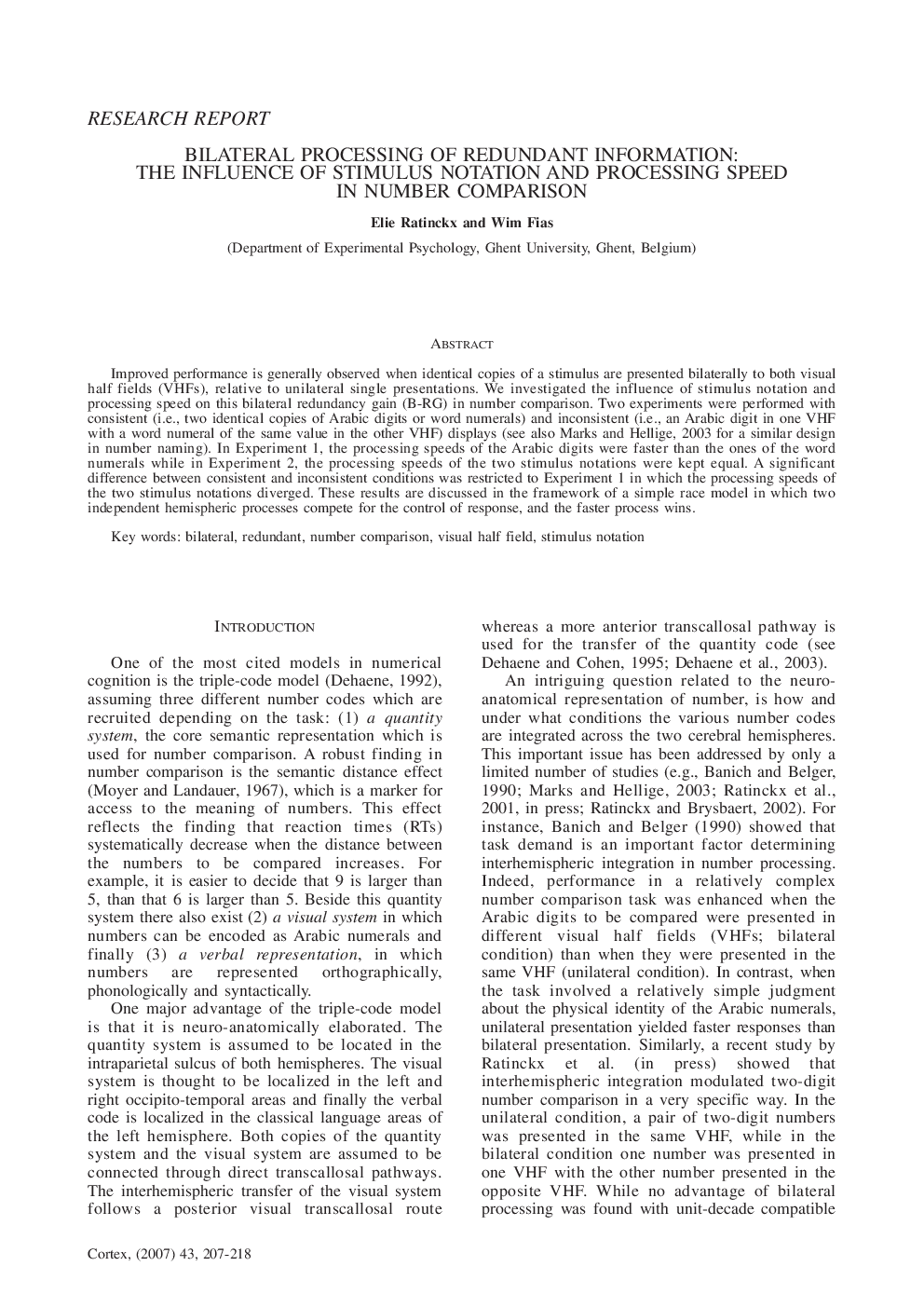| Article ID | Journal | Published Year | Pages | File Type |
|---|---|---|---|---|
| 942899 | Cortex | 2007 | 12 Pages |
Improved performance is generally observed when identical copies of a stimulus are presented bilaterally to both visual half fields (VHFs), relative to unilateral single presentations. We investigated the influence of stimulus notation and processing speed on this bilateral redundancy gain (B-RG) in number comparison. Two experiments were performed with consistent (i.e., two identical copies of Arabic digits or word numerals) and inconsistent (i.e., an Arabic digit in one VHF with a word numeral of the same value in the other VHF) displays (see also Marks and Hellige, 2003 for a similar design in number naming). In Experiment 1, the processing speeds of the Arabic digits were faster than the ones of the word numerals while in Experiment 2, the processing speeds of the two stimulus notations were kept equal. A significant difference between consistent and inconsistent conditions was restricted to Experiment 1 in which the processing speeds of the two stimulus notations diverged. These results are discussed in the framework of a simple race model in which two independent hemispheric processes compete for the control of response, and the faster process wins.
